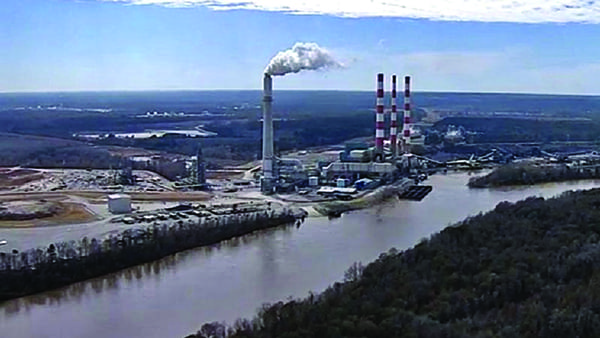Alabama PSC Backs Plan for New Gas Generation
Alabama Power’s plan to add about 2 GW of natural gas-fired power generation capacity to its portfolio was approved by the state’s Public Service Commission (PSC) on June 9. The PSC also supported the utility’s request to acquire 240 MW of gas-fired generation under a long-term power purchase agreement (PPA) that should begin this year, all part of a plan to increase resiliency across Alabama Power’s system.
The utility, a subsidiary of Southern Co., has previously said it is moving from a summer-peaking to a winter-peaking system. The utility last year filed a request to increase its fleet generation capacity by almost 20% for what it considered necessary resilience. The company has said it expects to recover all approved project costs through existing rate mechanisms.
The request identified several generation expansions across natural gas and solar power, as well as energy efficiency initiatives. Alabama Power had said the additions would cost about $1.1 billion, and the PSC on Tuesday partly approved a certificate of convenience and necessity for the utility to build a 726-MW gas-fired plant—a new combined cycle unit at the existing Barry Steam Plant—and acquire an existing 915-MW facility.
The PSC, though, did not approve plans for five proposed solar-plus-battery storage facilities, with a total generation capacity of about 400 MW. Regulators said those projects should be looked at separately as part of an energy procurement process. The agency did support about 200 MW of energy efficiency programs, including projects to mitigate energy usage at times of peak demand.
Analysis Supports Solar
“What I can tell you is that Alabama Power did not get all of what they asked for,” Twinkle Andress Cavanaugh, the PSC president, said Tuesday during the agency’s livestreamed meeting. Cavanaugh, along with commissioners Jeremy Oden and Chip Beeker, were unanimous in their support of staff recommendations made June 5 about Alabama Power’s proposal regarding resilience projects.
The utility’s own analysis, along with that from other energy analysts, had said the solar-plus-storage component of Alabama Power’s proposal would be the most cost-effective for the utility and its customers, and the PSC likely will consider that on a separate docket.
Regulators still must issue a final order on the utility’s resiliency plan. Michael Sznajderman, a spokesperson for Alabama Power, said, “We will be reviewing the full order from the commission, when it is available.”
Alabama Power’s solar-plus-storage component is focused on procurement through the PSC’s Renewable Generation Certificate, which was issued in 2015. The PPA approved Tuesday is for generation from the combined cycle Hog Bayou Energy Center in Mobile, which has a 238-MW generation capacity in winter.
New Unit at Barry Online in 2023
The new plant at Barry—Unit 8—would be expected to come online in November 2023, with an expected lifecycle of 40 years. Alabama Power is authorized to recover the “actual costs for the construction of Plant Barry Unit 8 up to 5% above the estimated in-service cost of $652 million,” according to an 8-K filing from the utility on June 10.

The Southern Environmental Law Center (SELC) in a news release said there were “significant flaws” in the utility’s proposal, and also chastised the PSC for not immediately supporting the solar-plus-storage projects.
“Unbelievably, the Public Service Commission did not approve the most cost-effective and most environmentally beneficial options proposed by Alabama Power,” said Daniel Tait, chief operating officer of Energy Alabama, an education and advocacy group focused on renewable energy and sustainability, in a statement. “In spite of the fact that more and more of its customers and businesses are demanding renewable energy options, this is yet another example of the Commission holding Alabama back from a clean energy future and the jobs that go along with it.”
Tait said that groups involved in the procurement proceedings know that adding solar power, and solar-plus-storage, is more cost-effective than adding natural gas-fired generation, and have verified that analysis. He said that data has not been released publicly.
Christina Andreen Tidwell, SELC staff attorney, in a statement said, “Alabama Power has substantially overstated its need for these gas plants given the glaring problems with its analysis—its projected need is even less reliable now due to the [COVID-19] pandemic and its economic impacts. It’s disappointing that the Commission did not require updated information from Alabama Power in order to fully assess these impacts on the utility’s request.”
New gas-fired power generation is part of Southern Co.’s strategy to replace coal-fired generation and reduce its fleet-wide greenhouse gas (GHG) emissions. The company on May 27 said it was setting “a long-term greenhouse gas emissions reduction goal of net-zero emissions by 2050.” Southern also reaffirmed an intermediate goal of a 50% reduction of GHG emissions from 2007 levels by 2030.
Southern Co. CEO Tom Fanning in announcing the emissions reduction plan told shareholders, “To achieve this goal, we will continue to reduce our greenhouse gas emissions, and continue our long-term commitment to energy efficiency … [and] also incorporate negative carbon solutions including technology-based approaches such as direct air capture of carbon, as well as natural methods like afforestation.”
—Darrell Proctor is associate editor for POWER (@DarrellProctor1, @POWERmagazine).